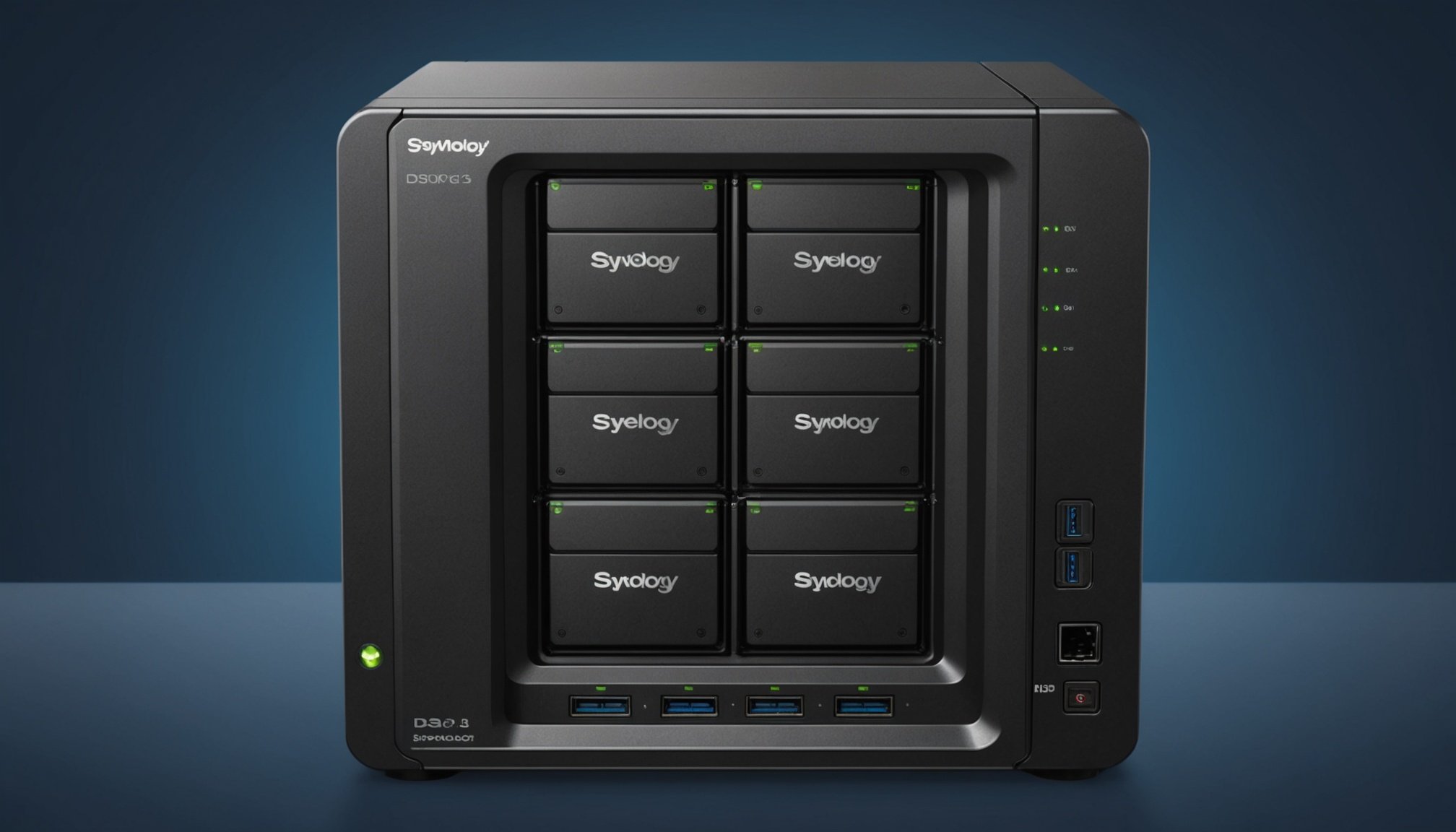Understanding RAID 5 and Its Benefits
RAID 5 is a popular storage solution that provides data redundancy and enhances storage performance. It employs a method called data striping, which distributes data blocks across multiple drives. This ensures efficiency as well as continuity, even if a single drive fails.
Advantages for NAS Systems
One of the key benefits of RAID 5, especially in NAS (Network Attached Storage) systems, is its blend of performance and fault tolerance. While RAID 5 offers high storage performance by distributing the data and parity information, it also maintains data integrity. The redundancy allows the system to rebuild lost data in case a drive fails, thereby minimizing downtime.
Additional reading : Ultimate Blueprint for Building a High-Performance 3D Rendering Workstation with AMD Threadripper 3960X
Comparison with Other RAID Configurations
When comparing RAID 5 to other configurations like RAID 0, RAID 1, and RAID 10, it stands apart with its balance between performance and redundancy. RAID 0 offers high performance with no redundancy, while RAID 1 provides full redundancy but halves storage utilization. RAID 10 combines these benefits but requires more drives, making RAID 5 ideal for those seeking a middle ground with efficient use of storage and improved data protection.
Prerequisites for Setting Up RAID 5 on Synology DS920+
Before diving into the RAID setup on the Synology DS920+, ensure you’ve met all essential hardware requirements. First, identify compatible drives for your DS920+. Compatibility ensures the RAID 5 configuration functions optimally, preventing future technical setbacks. Synology provides a recommended drive list tailored for the NAS.
Also to see : Unlock Seamless Remote Access: The Definitive Guide to Configuring Remote Desktop on Lenovo ThinkCentre M720q Tiny
Required Disks and Compatibility
For an effective RAID 5 setup, at least three compatible drives are necessary. These should have identical capacities for uniform storage performance. Using hitch-free and well-matched disks in terms of size and speed is imperative.
Software and Firmware Updates
Before initiating the setup, verify the Synology DSM version on your NAS. Regular updates ensure your NAS benefits from the latest security patches and feature enhancements. Access the DiskStation Manager’s Control Panel to check for updates, reinforcing your NAS’s resilience and functionality.
Network Configuration and Access
Optimizing your network settings is crucial for seamless NAS access. Connect your Synology DS920+ to a robust, high-speed network to leverage its storage capabilities optimally. Ensuring a stable network connection warrants that your NAS functions efficiently, reducing potential lags and enhancing overall data throughput. Engaging in proactive network configuration optimizes the performance and reliability of your Synology NAS.
Step-by-Step Guide to Configure RAID 5 on Synology DS920+
Configuring RAID 5 setup on your Synology DS920+ involves several precise steps to ensure optimal performance and data integrity. Start by accessing the Storage Manager via the Synology DSM. This interface allows you to manage your storage devices and create storage pools.
Creating a New Storage Pool with RAID 5
To initiate a new storage pool, navigate to the Storage Manager and select “Create.” Choose “RAID 5” as your configuration, guaranteeing both data redundancy and high storage performance. During this step, ensure you have at least three compatible drives installed. These drives should match in capacity to effectively utilize the storage pool’s potential.
Configuring Volume Settings and File System Options
Once the storage pool is established, proceed with configuring the volume settings. Opt for the Btrfs or EXT4 file system, which are supported by Synology, allowing for efficient data management and integrity checks. Customize your volume by adjusting settings like size and enable features such as snapshots for additional data protection. This meticulous approach to Synology NAS configuration ensures a robust RAID 5 setup, optimized for performance and reliability.
Performance Optimization Techniques
Enhancing the performance of your Synology DS920+ RAID 5 array involves incorporating advanced strategies. These techniques can significantly increase data throughput and improve overall efficiency.
Enabling Write Caching
To bolster write performance in RAID 5 setups, consider enabling write caching. This feature buffers write operations, allowing data processes to complete more efficiently, thus enhancing write speeds. While enabling write caching improves performance, ensure you have adequate power backup, such as a UPS, to prevent data loss during outages.
Using SSD Caching
Implementing SSD caching can dramatically improve your RAID 5 performance by storing frequently accessed data in faster SSDs. This speeds up data retrieval times and significantly optimizes the system. Synology DS920+ facilitates easy SSD caching setup within the Storage Manager, providing a seamless enhancement to your NAS.
Network Speed Enhancements
Optimizing your network configuration increases data transfer rates. Upgrading to gigabit or higher network interfaces and ensuring properly configured routers can enhance data throughput for your NAS setup. Network speed enhancements complement other performance tuning strategies, ensuring a robust and efficient RAID 5 environment, ideal for quick access and storage.
Troubleshooting Common RAID 5 Issues
Navigating RAID troubleshooting can be daunting, but understanding some common problems helps improve error handling. One frequent issue is drive failure. In a RAID 5 setup, when a drive fails, the array can still function, but it’s crucial to replace the faulty drive promptly. Delaying replacement risks further data loss if another drive fails.
To handle errors, initiate data recovery using Synology’s in-built tools. Start with the Storage Manager to identify failed drives. Utilize the “Repair” option to begin the data rebuilding process. It’s vital to frequently check system logs for warnings related to disk issues.
If the RAID 5 array itself becomes corrupt, consider RAID recovery services. Although it’s an advanced solution, restoring data from an external service ensures minimal data loss. Employ a robust backup strategy in sync with RAID configurations to mitigate risk.
Maintaining RAID health involves regular diagnostic checks. Schedule consistency checks within the Synology DSM. This scans for inconsistencies and helps prevent system errors. Keep RAID firmware updated to minimize vulnerabilities. By following these best practices, RAID 5 maintains optimal performance.
Best Practices for RAID 5 Maintenance
Maintaining a RAID 5 array involves several key practices to ensure its reliability and longevity. Regular health checks are paramount. By frequently scheduling consistency checks using Synology tools, potential inconsistencies within the RAID can be identified early, reducing system errors. Synology’s DSM offers built-in monitoring tools that allow you to set up alerts, keeping you informed about the array’s status.
Another essential aspect is data backups. While RAID 5 offers data redundancy, it’s not a substitute for regular backups. Implementing a comprehensive backup strategy alongside RAID configurations ensures data protection against catastrophic failures or data corruption. Consider automated backup services or external devices as part of your strategy.
When it comes to upgrading or replacing drives, follow guidelines diligently. Regularly checking drive health helps in identifying aging or failing drives, which should be promptly replaced. When replacing drives, use those that match the existing ones in capacity and speed to maintain optimal RAID performance.
By integrating these practices into your maintenance routine, the RAID 5 array on your Synology DS920+ will continue to function efficiently, safeguarding your data and investment.











